Invented by David Henry Gilbert, SPERRY RAIL HOLDINGS Inc
Machine learning is a subset of artificial intelligence that enables computer systems to learn and improve from experience without being explicitly programmed. By using algorithms and statistical models, machine learning systems can analyze vast amounts of data and identify patterns or anomalies that humans may overlook. This technology has proven to be highly effective in various industries, and rail inspection is no exception.
The system and method for inspecting a rail using machine learning involve the use of sensors and cameras mounted on inspection vehicles or drones. These sensors capture high-resolution images and collect data about the rail’s condition, such as cracks, wear, or other defects. The collected data is then processed and analyzed by machine learning algorithms to identify potential issues and prioritize maintenance or repair activities.
One of the key advantages of using machine learning in rail inspection is its ability to detect subtle defects that may not be visible to the naked eye. By training the algorithms with a vast amount of data, the system can learn to recognize even the smallest cracks or abnormalities, enabling early detection and prevention of potential failures. This proactive approach significantly reduces the risk of accidents and improves overall rail safety.
Furthermore, the use of machine learning in rail inspection offers significant cost savings and operational efficiencies. Traditional inspection methods often require manual labor and can be time-consuming, leading to increased labor costs and disruptions to rail operations. In contrast, machine learning-based systems can perform inspections at a much faster pace, covering larger areas in a shorter time. This not only reduces labor costs but also minimizes the impact on rail operations, allowing trains to run smoothly without unnecessary interruptions.
The market for the system and method for inspecting a rail using machine learning is expected to witness substantial growth in the coming years. The increasing investments in railway infrastructure, coupled with the growing emphasis on safety and reliability, are driving the demand for advanced inspection solutions. Governments and railway authorities worldwide are recognizing the potential of machine learning in improving rail safety and are actively seeking innovative technologies to enhance their inspection capabilities.
Several companies are already offering machine learning-based rail inspection systems, and competition in the market is intensifying. These companies are continuously investing in research and development to enhance the accuracy and efficiency of their systems. They are also collaborating with railway authorities and research institutions to gather more data and improve the performance of their algorithms.
In conclusion, the market for the system and method for inspecting a rail using machine learning is witnessing significant growth due to the increasing demand for efficient and accurate rail inspection solutions. Machine learning-based systems offer numerous advantages, including improved safety, cost savings, and operational efficiencies. As the technology continues to evolve and gain wider acceptance, it is expected to become an integral part of rail inspection processes worldwide, ensuring the safety and reliability of railway networks.
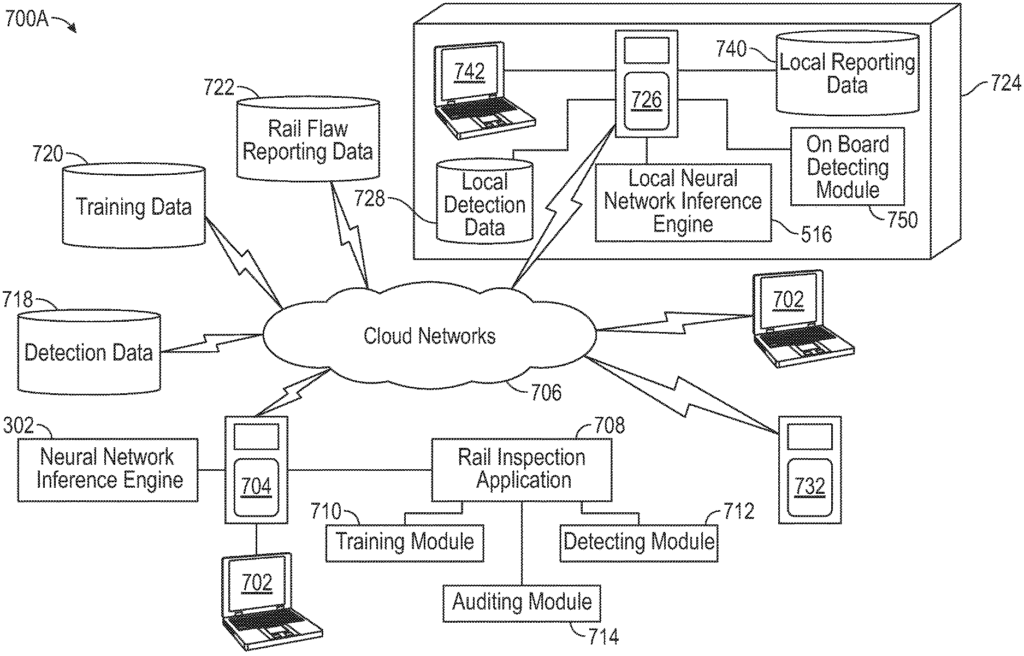
The SPERRY RAIL HOLDINGS Inc invention works as follows
An aspect” includes a vehicle with rail inspection sensors that capture transducer information describing the rail. The processor is configured to receive and process the transducer info in near real time, determining whether the data captured by the sensor indicates a suspected rail fault. Input of the captured data is done to a machine-learning system, which has been taught to recognize patterns in the data. The machine learning system also provides an output that indicates whether the transducer data captured identifies a rail flaw. The output that indicates the captured data from the transducer identifies a rail flaw is used to send an alert to the operator of the vehicle. The alert contains the location of the suspected rail fault and instructs an operator to stop their vehicle and perform a repair.
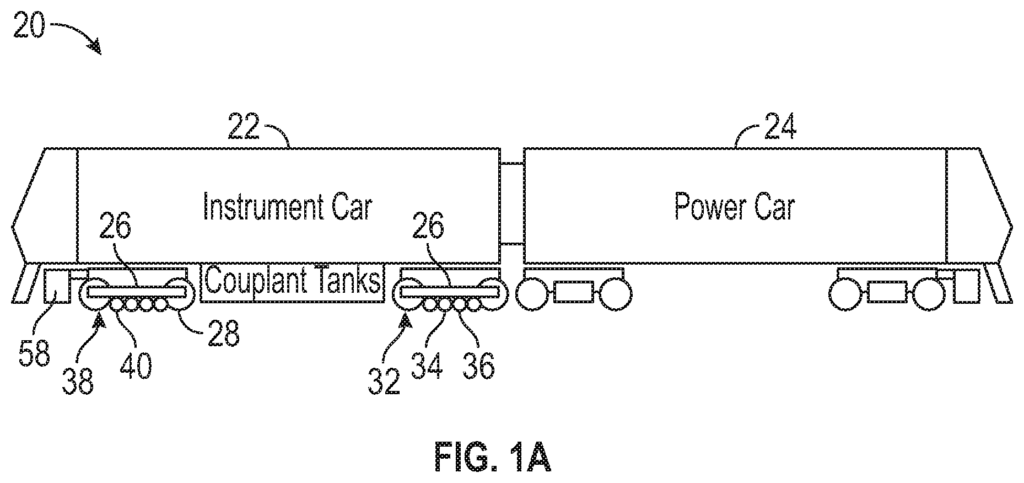
Background for System and Method for Inspecting a Rail Using Machine Learning
The subject matter disclosed in this document relates to a method and system for inspecting rails, and more specifically to a method and system for inspecting rails using machine learning.
Railroad Inspection typically involves the use ultrasonic scanners or induction sensors. Eddy current sensors and camera sensors are also used. The railroad inspection detects features on a rail which could indicate a rail fault. Ultrasonic techniques are usually performed using ultrasonic transducers that are mounted on the pliable wheels of rail vehicles. These wheels ride over the top surface of the rail. The wheels are injected with coupling fluid to allow the transducers inside them to send ultrasonic waves into the rail. The returned signals are analyzed and used to map out the location of rail flaws. After the detection data has been recorded, it’s analyzed to find patterns in the signal that correspond to rail faults. These patterns are labeled in order to distinguish them from other signals, such as noise, bolt holes, rail end, welds and rail ends.
The current labeling system is labor-intensive and requires many hours to analyze patterns to find rail flaws. Analyst fatigue or lack experience could lead to errors in human analysis. In order to address these issues human analysis is often combined rules-based software that highlights transducer patterns which may indicate rail flaws. These rule-based software systems are usually tuned to accept many false positives in order to avoid missing rail flaws. The results of the rule-based systems still need to be reviewed by human analysts in order to remove false positives. This only reduces the time.
Accordingly while existing rail inspection system are suitable for their intended purposes, the need for improvements remains, especially in providing a method and system of inspecting rails using machine learning.
BRIEF DISCLOSURE DESCRIPTION
A vehicle is described in one aspect of the disclosure. The vehicle is equipped with rail inspection sensors that capture transducer data about the rail. It also has a processor. The processor receives and processes the transducer information in near real time to determine if the data indicates a rail defect. Input of the captured data is made to a machine-learning system, which has been taught to recognize patterns in transducer signals that indicate rail faults. The machine learning system also provides an output that indicates whether the transducer data captured identifies a rail flaw. The output that indicates the captured data from the transducer identifies a rail flaw is used to send an alert to the operator of the vehicle. The alert contains the location of the suspected rail fault and instructs an operator to stop their vehicle and perform a repair.
Other aspects of the disclosure provide methods, systems and computer program products to inspect a rail. One non-limiting method involves receiving transducer information from rail inspection sensors mounted to a vehicle located on the rail. Transducer data are processed to determine the locations of rail flaws suspected in the rail. This includes converting the transducer information into a format that can be used by a machine-learning system, which has been programmed to recognize patterns that are indicative of rail flaws. The machine learning system produces a list of rail flaws suspected and their locations on the rail. The list of rail flaws is used to initiate a repair.
These and other benefits and features will be more obvious if you read the description in conjunction with the drawings.
BRIEF DESCRIPTION DES DRAWINGS
The claims conclude the specification with the statement: “The disclosure is the subject matter which is specifically and clearly stated in the claims.” “The foregoing, as well as other features and advantages of disclosure are evident from the following detailed descriptions taken together with the accompanying illustrations in which:
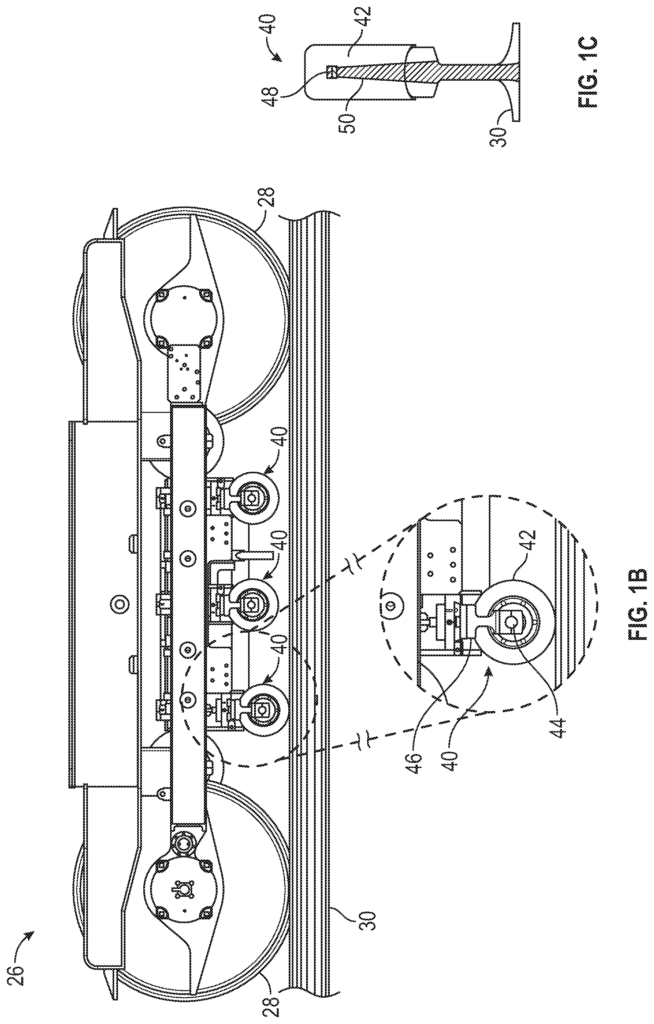
FIGS. “FIGS.
FIG. “FIG.
FIG. “FIG. 2A;
FIG. “FIG.
FIG. “FIG.
FIG. “FIG.
FIG. “FIG.
FIG. “FIG.
FIG. “FIG.
FIG. “FIG.
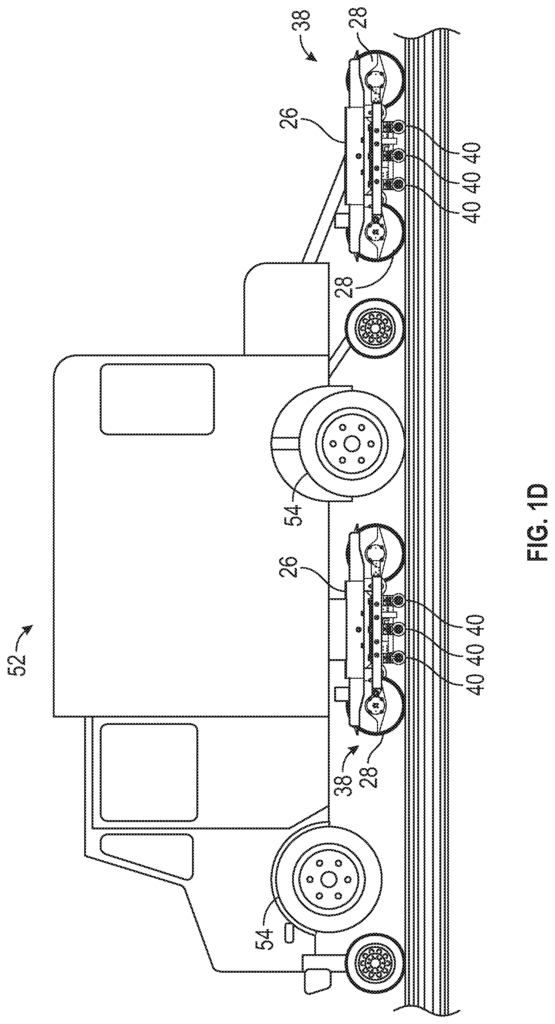
FIG. “FIG.
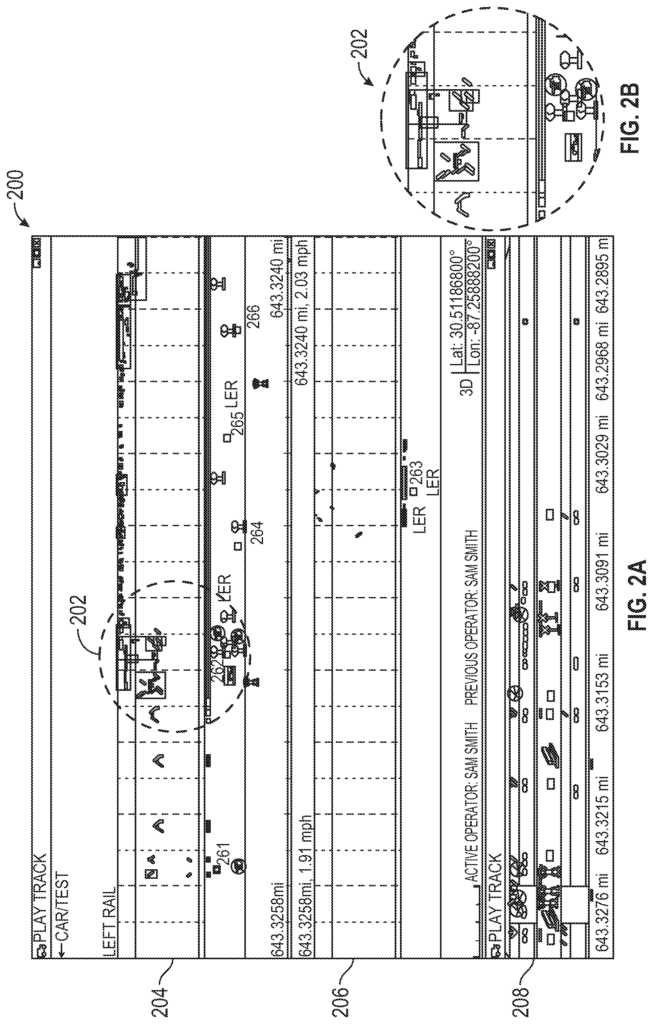
Click here to view the patent on Google Patents.
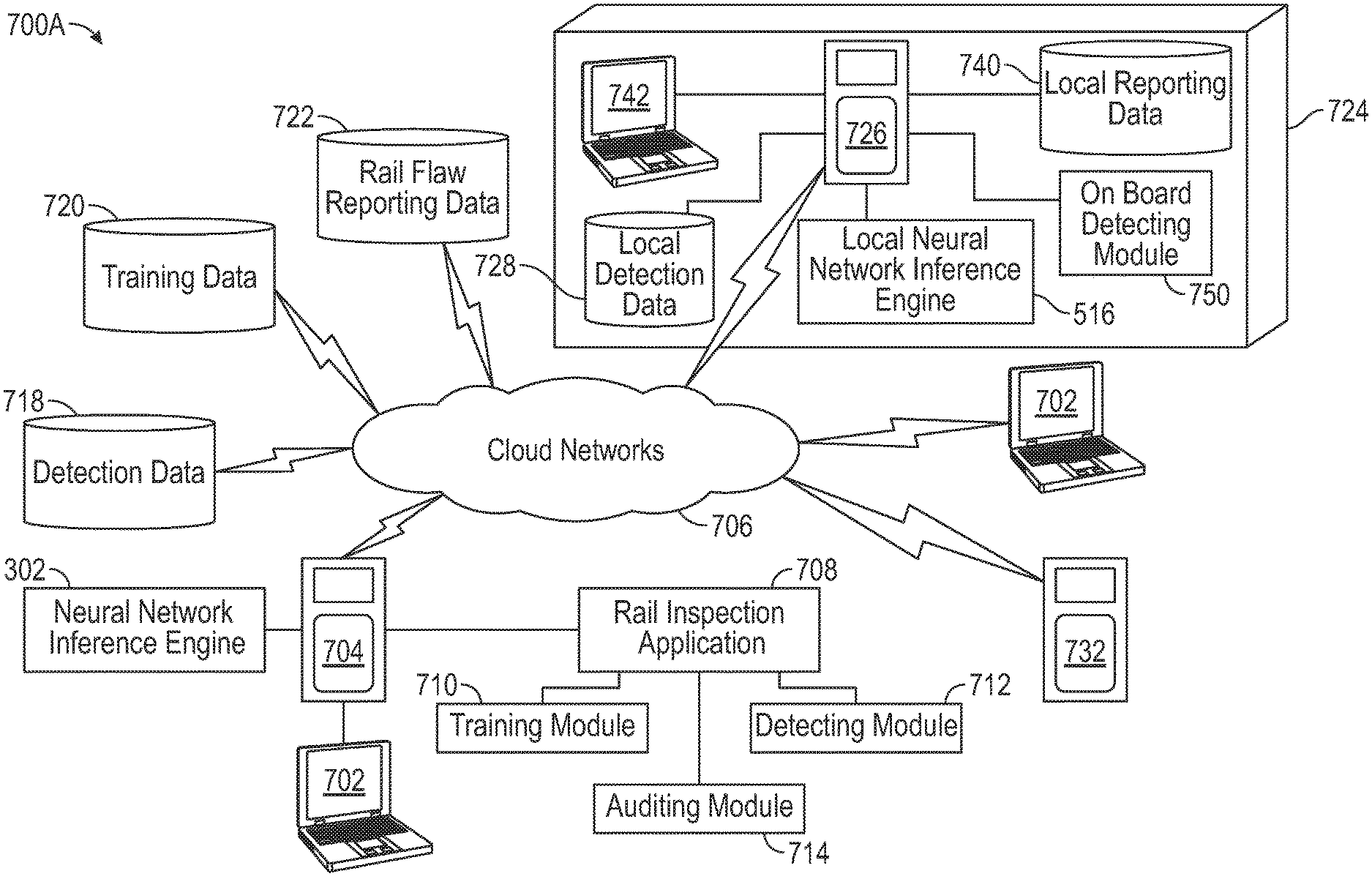
Leave a Reply